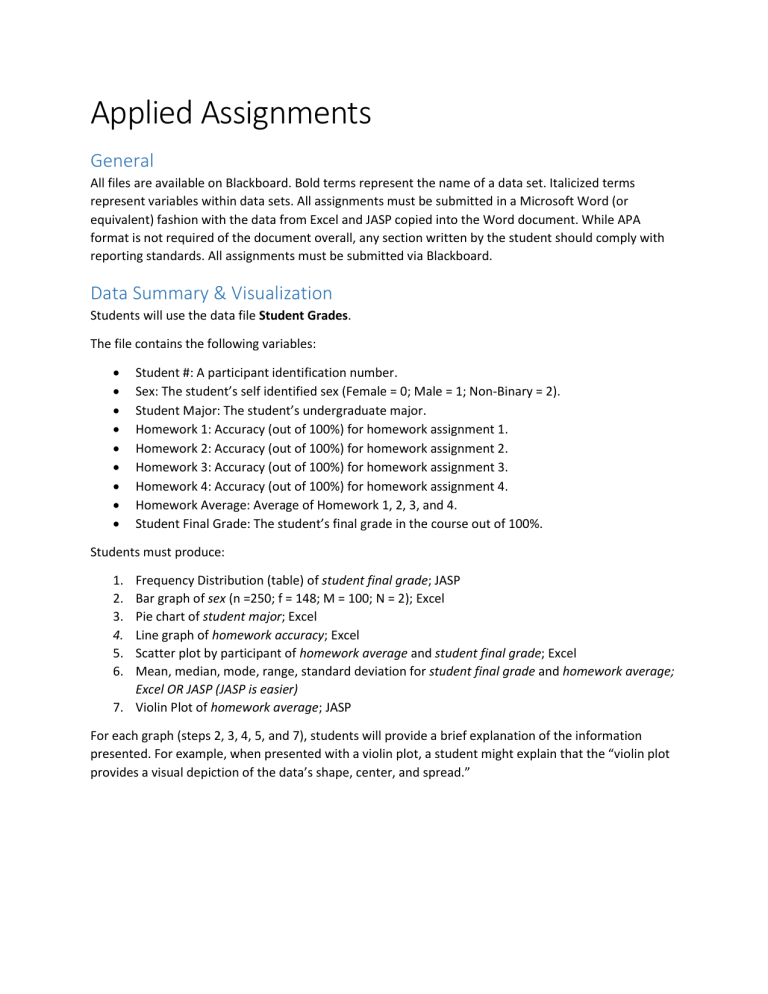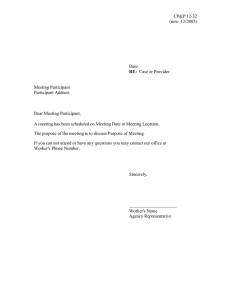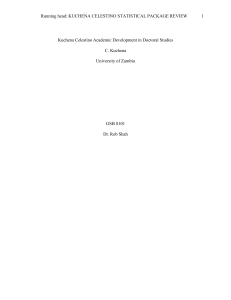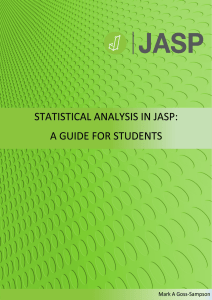
Applied Assignments General All files are available on Blackboard. Bold terms represent the name of a data set. Italicized terms represent variables within data sets. All assignments must be submitted in a Microsoft Word (or equivalent) fashion with the data from Excel and JASP copied into the Word document. While APA format is not required of the document overall, any section written by the student should comply with reporting standards. All assignments must be submitted via Blackboard. Data Summary & Visualization Students will use the data file Student Grades. The file contains the following variables: Student #: A participant identification number. Sex: The student’s self identified sex (Female = 0; Male = 1; Non-Binary = 2). Student Major: The student’s undergraduate major. Homework 1: Accuracy (out of 100%) for homework assignment 1. Homework 2: Accuracy (out of 100%) for homework assignment 2. Homework 3: Accuracy (out of 100%) for homework assignment 3. Homework 4: Accuracy (out of 100%) for homework assignment 4. Homework Average: Average of Homework 1, 2, 3, and 4. Student Final Grade: The student’s final grade in the course out of 100%. Students must produce: 1. 2. 3. 4. 5. 6. Frequency Distribution (table) of student final grade; JASP Bar graph of sex (n =250; f = 148; M = 100; N = 2); Excel Pie chart of student major; Excel Line graph of homework accuracy; Excel Scatter plot by participant of homework average and student final grade; Excel Mean, median, mode, range, standard deviation for student final grade and homework average; Excel OR JASP (JASP is easier) 7. Violin Plot of homework average; JASP For each graph (steps 2, 3, 4, 5, and 7), students will provide a brief explanation of the information presented. For example, when presented with a violin plot, a student might explain that the “violin plot provides a visual depiction of the data’s shape, center, and spread.” T-Test Students will use a data file, Invisibility Cloaki. The file contains the following variables: Participant: Identification number of a participant. Cloak: Experimental group (0 = without a cloak of invisibility, 1 = with a cloak of invisibility). Mischief: the number of mischievous acts committed by a participant. We will test the hypothesis that students who use an invisibility cloak and those who do not use an invisibility cloak engage in different amounts of mischievous acts. Students must produce: 1. Independent Samples T-Test in which Mischief is the dependent variable and Cloak is the independent variable (i.e., Grouping Variable, in this case). Students should select the correct options to produce: a. Location parameter (i.e., mean difference) b. Effect Size (i.e., Cohen’s d) c. Descriptives d. Descriptive Plots with confident interval 95% 2. Brief writeup explaining the results of the t-test. The writeup should be 1 paragraph, include the necessary statistics and their interpretation. An example is provided below: One group of elementary students received a reading intervention, Directed Reading, and their reading scores were compared to a control group at the end of the 8-week intervention. The treatment group has on average about ten points more on the reading test than the control group, t(37.86) = 2.311, p = 0.013, which translates to a medium effect, Cohen’s d = 0.691ii,iii One-Way ANOVA Students will use a data file, Facebook Friendsiii,iv. The file contains the following variables: Participant: Participant number. Friends: Experimental group. The number of friends (the number indicates the number of friended accounts with a mockup profile). Score: Social attractiveness rating of the mockup profile (1 = lowest rating; 7 = highest rating). We will test the hypothesis that as the number of friends increase, a profile’s social attractiveness score increases. Students must produce: 1. Descriptives by score and friends a. Score is the variable of interest and should be moved to the variable box b. Friends are our grouping variable; we’ll split by Friends. c. Produce Boxplots with Boxplot and Violin elements. 2. ANOVA where in score is the dependent variable and friends is the independent variable d. Under Additional Options, the student should check the Estimates of Effect Size box and ensure that η2 is checked. Neither Partial η2 or ω2 should be checked. e. Under Descriptive Plots, Friends should be moved to the horizontal axis. Display error bars should be ticked. 3. Brief writeup explaining the results of the one-way ANOVA and the general trend of the descriptive plot. The writeup should be 1 paragraph, include the necessary statistics and their interpretation. An example is provided below: The one-way ANOVA was significant, F(1,85) = 4.996, p = 0.028, η2 = 0.057, and suggest that it is unlikely to observe these differences if the null hypothesis is true. The effect size indicates a modest effect and suggests that 5 to 6 percent of the variance in social attractiveness ratings can be explained through the number of friends an individual has on their social media page. Single-Case Design COMING SOON TO AN ASSIGNMENT SHEET NEAR YOU. Regression Students will use the data file Student Grades. Recall that we used this data set in the first activity (see page 1 for details). We have already produced descriptives of these data and visualized key aspects. We want to know if Homework average can predict Student Final Grade. Students will produce: 1. Correlation plot of Homework Average and Student Final Grade. 2. Linear Regression predicting Student Final Grade with Homework Average. 4. Students will produce 1-2 sentences explaining the findings of the simple linear regression (with focus on R2) and the coefficients table (with focus on t and p). An example is provided below: Example: Model Summary 1 Coefficients R 0.578 Variable Average Homework R2 0.335 Unstandardized (SE) .86 (.010) F(df) p 99.59(1,198), <.001 T (p) 19.979(198), < .001 Note. Some elements have been combined from JASP output. Other elements (e.g., standardized estimate) have been eliminated. These steps were taken for clarity. These data are simulated and should not be used for your assignment. These data would be found in the Model Summary (i.e., R, R2), ANOVA (i.e., F, df, and p), and Coefficients (i.e., unstandardized estimate, standard error [SE], t, df, and p values) tables. The model suggests that Average Homework predicts Student Final Grade fairly well, as it explains 33.5% (R2 = 0.335) of the variance in the final grade. Additionally, observing this pattern (or a more extreme one) is highly unlikely if Homework Average and Student Final Grades were not related to each other, F(1,198) = 99.59, p < .001. Finally, as a student’s Average Homework grade increases by 1 point, the Student’s Final Grade increases by .86 (unstandardized = .86, t(198) = 19.979, p > .001) points. i Field, A. P. (2017). Discovering Statistics Using IBM SPSS Statistics (5th ed.). London: Sage. [Fictional data set]. ii Schmitt, M. C. (1978). The effects of an elaborated directed reading activity on the metacomprehension skills of third graders. PhD thesis, Purdue University. iii iv D. S. Moore, G. P. McCabe, & B. A. Craig. Introduction to the practice of Statistics (7 th ed.). New York: Freeman. Tong, S. T., Van Der Heide, B., Langwell, L., & Walther, J. B. (2008). Too much of a good thing? The relationship between number of friends and interpersonal impressions on Facebook. Journal of Computer-Mediated Communication, 13.




